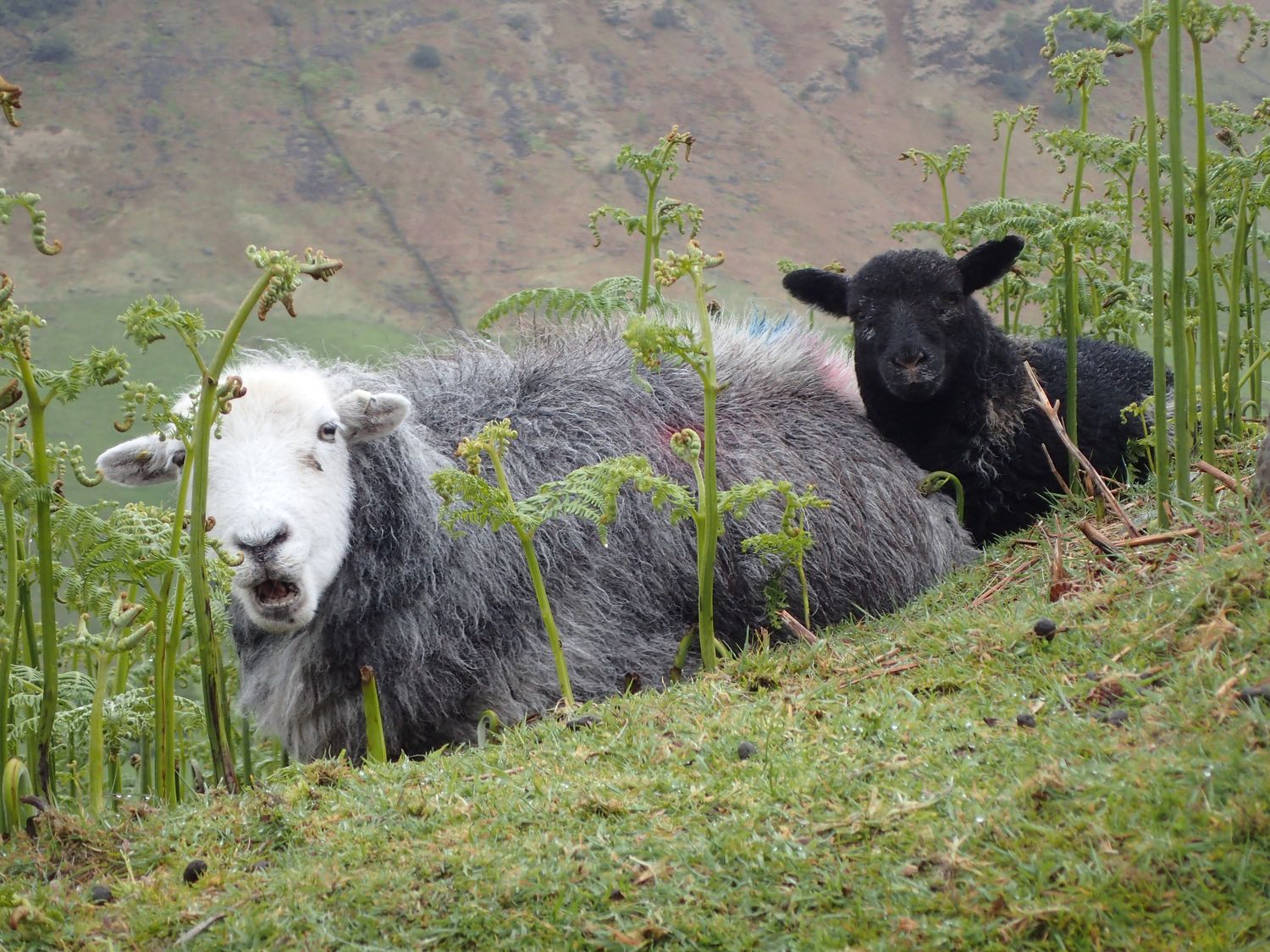9 Things You Probably Didn’t Know About Herdwick Sheep
/WRITTEN by ANNE ENSOLL
If you’ve spent any time in the Lake District, you will almost certainly have seen Herdwick sheep grazing on the high fells and in the fields down in the valleys. With their distinctive shaggy grey coats and appealing faces, they are hard to miss. You’re not likely to see them anywhere else in the UK, as 99% of our Herdwicks live in the central and western Lake District.
A Herdwick ewe and lamb in the Langdale valley. Photo credit: Val Kozlov
1 The name “Herdwick” is derived from the Old Norse “herdvyck”, meaning sheep pasture
It is thought that the sheep were introduced to the area during the Viking invasions of Western England, possibly in the 10th and 11th centuries, although the exact origins are not well-documented. By the end of the 12th century Herdwicks were an important breed in the Lake District. Today, 95% of the Lake District’s Herdwick sheep are kept in commercial flocks within fourteen miles of Coniston.
2 All Herdwicks are born with black faces, black legs and almost-black fleeces
The fleece lightens to a dark brown colour after the first year, and at about a year old the wool on the head grows out, revealing the white hair underneath. The heads and legs become white, and after the first shearing the fleece lightens further to grey, ranging from blue-grey to light grey.
3 Herdwick sheep have a homing instinct and will return to their native pastures if moved
Farmers call this being “heafed” to the fell, something that has been bred into them over hundreds of years. Herdwicks have an excellent sense of direction, so they can graze on the open fells without being enclosed. The lambs learn this by grazing with the ewes.
4 Due to their hardiness, Herdwick sheep are particularly suited to the Lake District
Herwicks can spend the winter out on the fells, and they can survive on the limited quality food available. They can withstand the cold and wet weather even on the high fells.
5 Female Herdwicks don’t have horns
The rams (or tups) have big curly horns, but the females are naturally horn-free or polled.
6 Herdwick meat received a Protected Designation of Origin from the European Union in 2012
Meat from Herdwicks can now only be classed as Lakeland Herdwick if the animals are born, raised and slaughtered in Cumbria. The designation puts the Herdwick meat in the same category as Champagne, Cornish pasties and Melton Mowbray pies.
7 Herdwick sheep are a dual-purpose breed, as they produce both meat and wool
Today, the breed is raised mainly for meat production purposes, but there has been a resurgence of interest in the fleece. Herdwick sheep wool is coarse and difficult to dye, but it is used un-dyed in products such as carpets. There are between one and two kilograms of wool in a fleece at shearing, and that will make approximately one square metre of carpet. Herdwick fleece is also an excellent insulator (all those sheep can’t be wrong), so it is great for using as loft insulation.
8 Herdwick sheep are the ‘gardeners’ of the Lake District
Herdwicks will graze on almost any kind of vegetation (grass, heather, bilberry, young trees), and so have shaped the Lake District landscape as we know it today. The treeless mountainsides are a result of centuries of sheep grazing.
9 Beatrix Potter was a Herdwick farmer
Beatrix Potter (creator of Peter Rabbit) bred Herdwicks in the Lake District at a time when they were a threatened native breed. She was the first woman to be elected President of the Herdwick Sheep Breeders’ Association in 1943, (although she died before she took up the chair). She bequeathed fifteen farms, covering almost 4,000 acres, to the National Trust on the understanding they were allowed to continue to breed Herdwicks.
Sources
5 things you didn’t know about Herdwick sheep
Herdwick Sheep Characteristics & Breed Information




